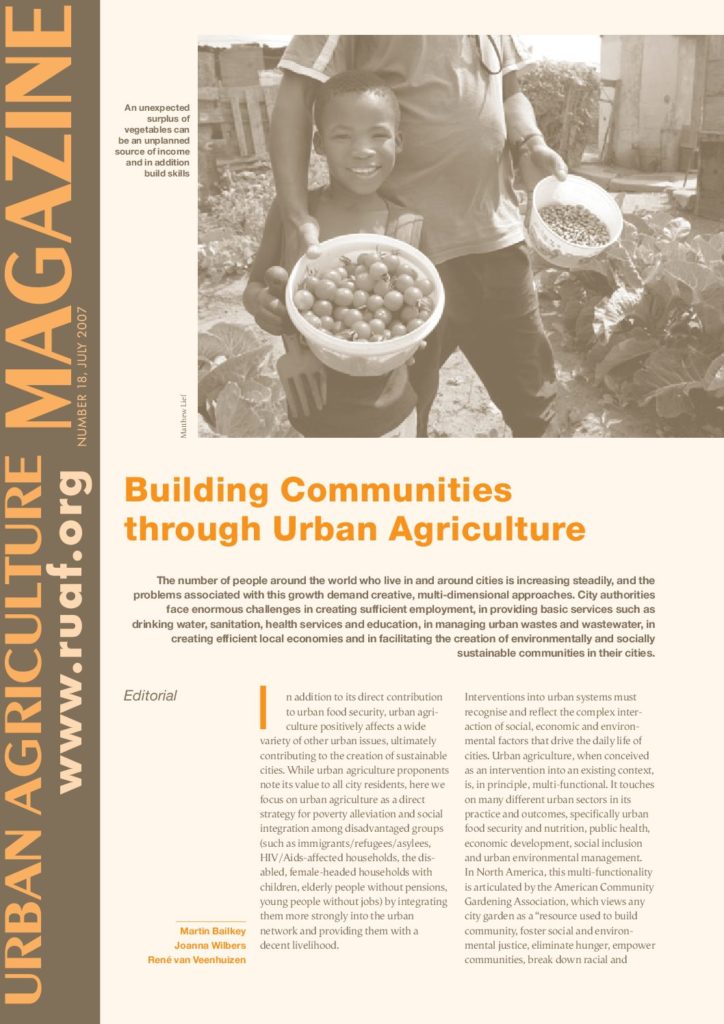In this issue of the Urban Agriculture Magazine we focus on urban agriculture as a direct strategy for poverty alleviation and social integration among disadvantaged groups (such as immigrants or refugees, HIV/Aids-affected households, the disabled, female-headed households with children, elderly people without pensions, young people without jobs) by integrating them more strongly into the urban network and providing them with a decent livelihood. Examples of the social impact of urban agriculture and the varieties of this impact around the world are presented. Their lessons can be used in supporting other organisations and future urban farmers in the building of sustainable cities.
Also available in Portuguese, Spanish, French and Arabic.
Contents:
- HIV/AIDS, Urban Agriculture and Community Mobilisation: cases from Zimbabwe
- Community-Based Urban Agriculture in Two East African Capitals
- Targeting Socially Excluded Groups: community gardening in KwaZuluNatal, South Africa
- Promoting a City without Hunger and Indifference: urban agriculture in Bogotá, Colombia
- Community Supported Agriculture: French approaches
- Promoting Urban Agriculture through the Community Food Centre Model
- Emerging Migrant Farmer Communities in Peri-urban Beijing
- The Development of a Women Producers’ Cooperative in Istanbul
- Asset-Based Community Development in Urban Agriculture: experiences from the southern Philippines
- A Response to a Growing Crisis: urban food gardening in South Africa’s townships
- Immigrant Farming in the Northeast United States: what makes sense?
- Growing Home and the Emergence of Urban Agriculture in Chicago
- The Effectiveness of Urban Agriculture as a Survival Strategy among Gweru Urban Farmers in Zimbabwe
- Urban Agricultural Experiences from the Perspective of Social Responsibility
- Legislation, Policies and the Practice of Urban Farming in Nakuru, Kenya: an addendum

